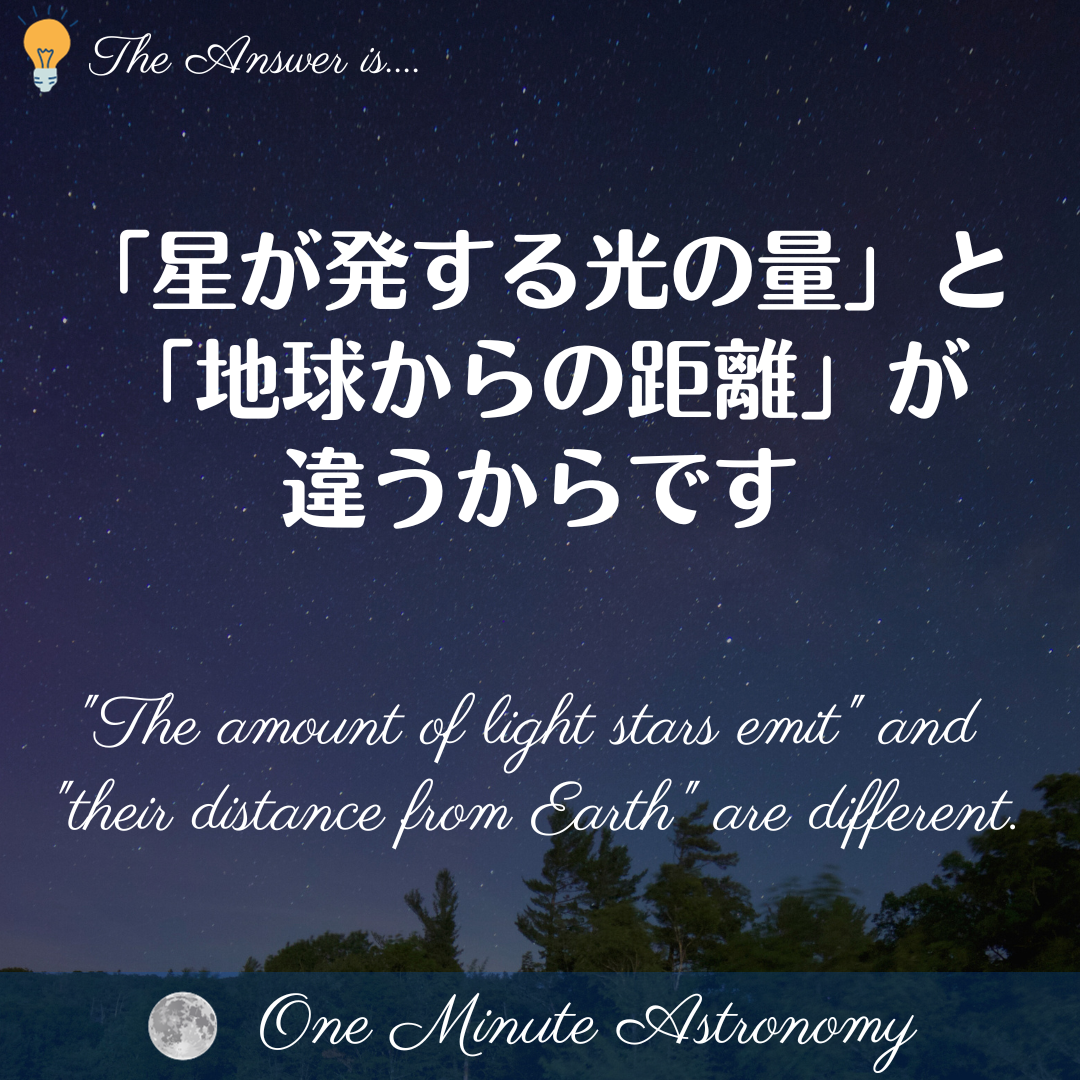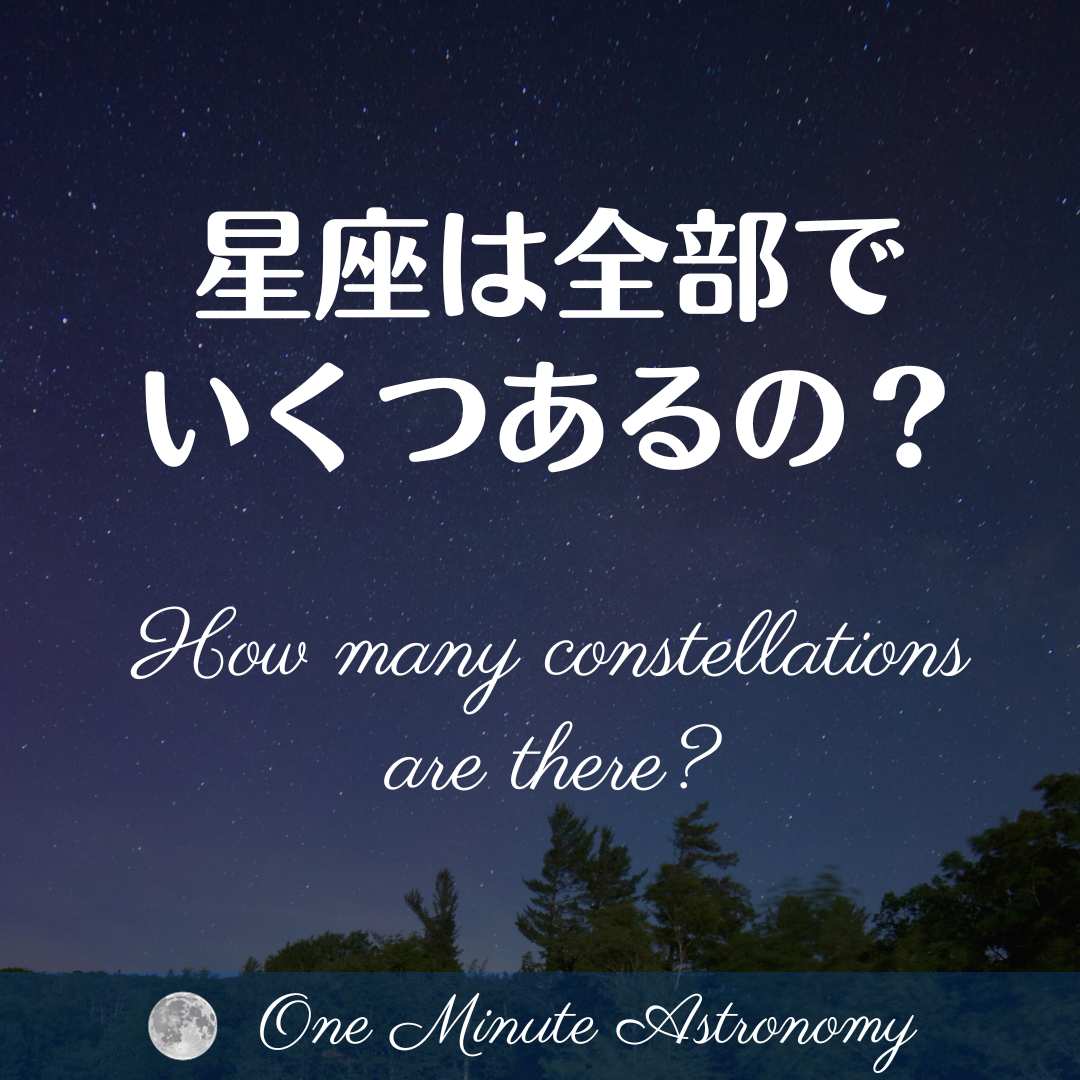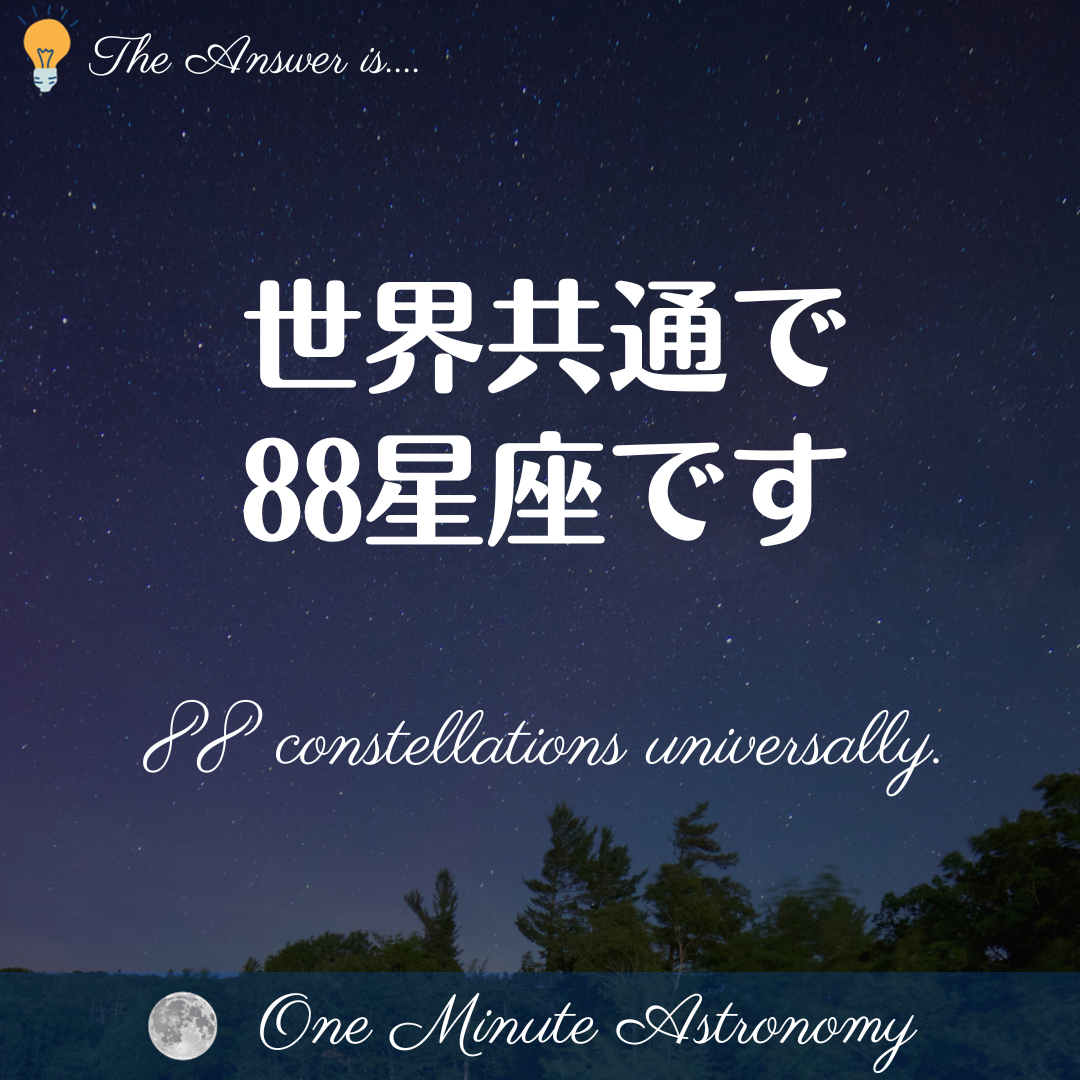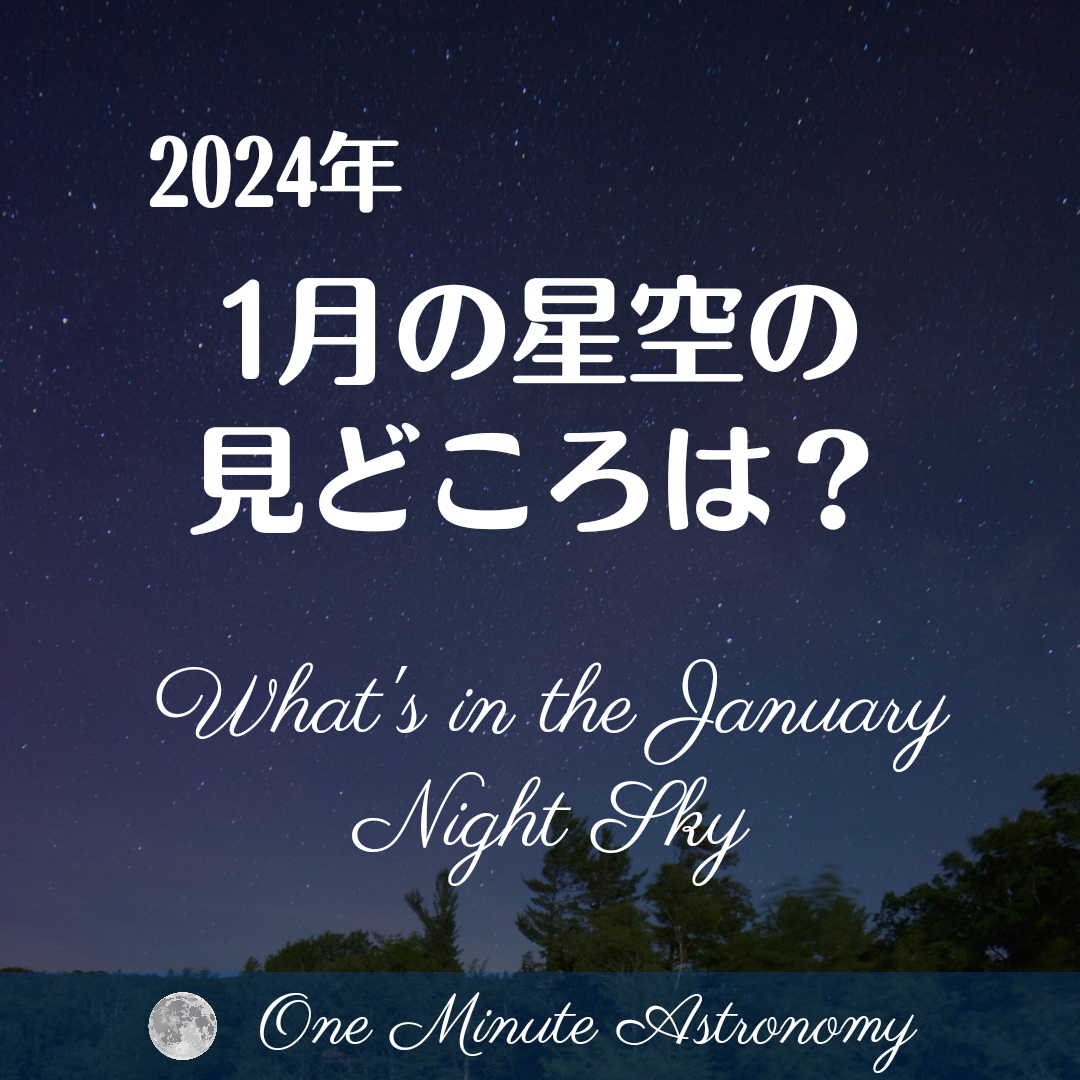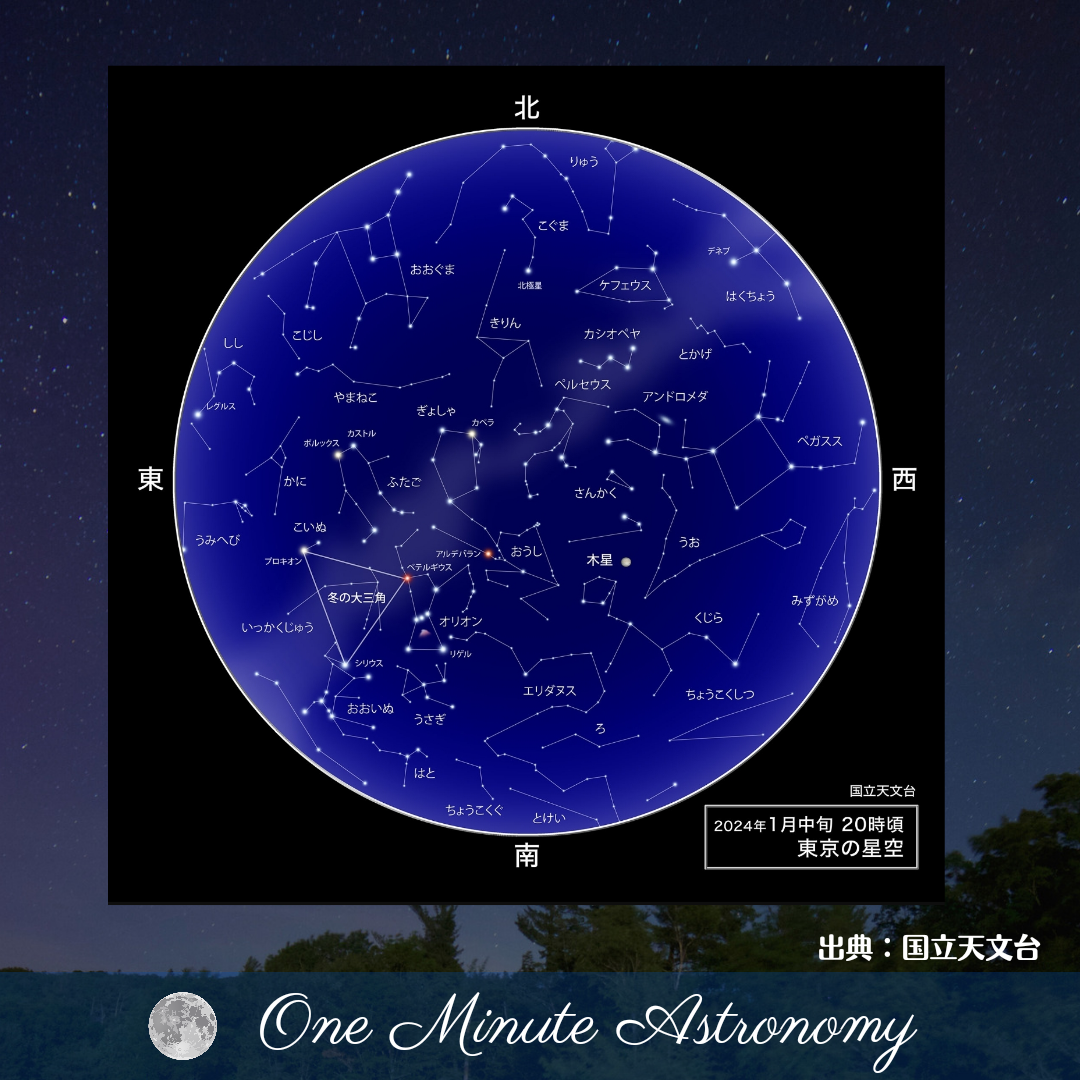
*星の色は何故違うの?
夜空を見上げてみると、青白い星やオレンジ色など様々な色の星があります。星の色は何故違うのでしょうか。それは、星の表面温度が違うからです。青い星が一番温度が高く、白→黄→オレンジ→赤の順序で温度が低くなります。乙女座の一等星スピカは青白く輝いており、表面温度は約12,000度あります。一方、さそり座のアンタレスは赤色をしており、表面温度は3,800度しかありません。日常生活の中でも炎の色は青い方が高温で、オレンジ色の方が低温なのと同じ原理です。尚、一般的には温度の高い星ほど明るく、温度が低い星ほど暗くなります。よって、もし星を同じ距離に並べたら青い星が一番明るく見えます。ただ、夜空の星は地球からの距離でも見かけの明るさが変わるため、550光年しか離れていないアンタレスは赤い星ですが一等星として夜空で輝いているのです。ちなみに太陽は表面温度が6,000度ですので、遠い宇宙から太陽を眺めると黄色の星ということになります。
*Why Do Stars Have Different Colors?
When you look up at the night sky, you'll notice stars of various colors, from bluish-white to orange. So, why do stars exhibit different colors? It all comes down to their surface temperatures. Blue stars are the hottest, while the temperature decreases in the following order: white, yellow, orange, and red. For instance, the first-magnitude star Spica in Virgo shines with a bluish-white hue and boasts a surface temperature of around 12,000 degrees Celsius. On the other hand, Antares in Scorpius appears red and has a surface temperature of only 3,800 degrees Celsius. This phenomenon is akin to the colors of flames in our everyday lives, where blue flames indicate higher temperatures and orange flames indicate lower temperatures.
In general, stars with higher temperatures appear brighter, while cooler stars appear dimmer. Therefore, if you were to place stars at the same distance from Earth, the bluish ones would appear the brightest. However, the apparent brightness of stars in the night sky also depends on their distance from Earth. For example, despite being only about 550 light-years away, Antares appears as a red star but still shines brightly as a first-magnitude star in our night sky. For reference, the Sun has a surface temperature of approximately 6,000 degrees Celsius, making it appear yellow when viewed from distant regions in space.




